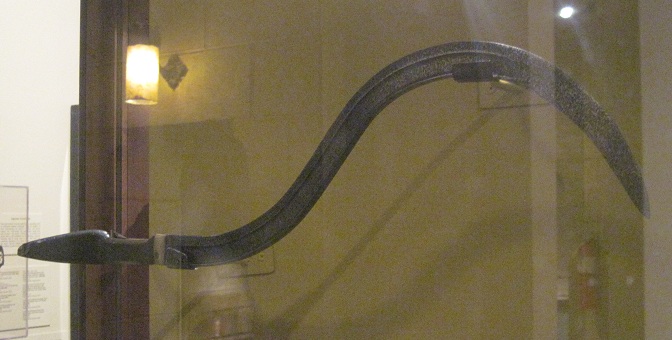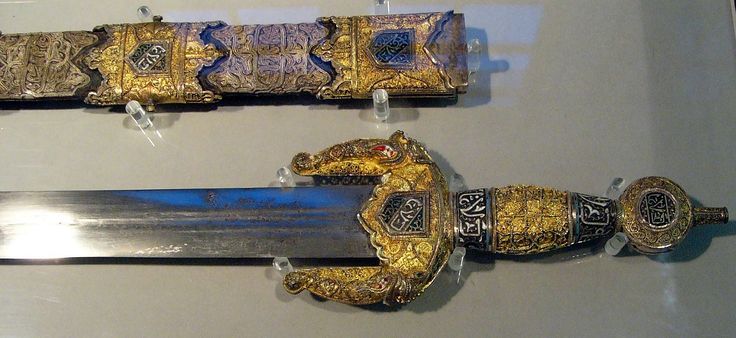Very beautiful pictures, the Gold ones looks tempting.
lol yeah, I would feel intimidated if one of them ever come to me while carrying daggers.

There are many more elaborate Arabian swords and daggers out there. Especially those made historically for royalty and nobility.
Nothing to be intimidated about. It is normal for people (adult males) in Yemen, Oman and Southern KSA to wear daggers such as jambiyas.
They are solely worn as decoration although sometimes this can occur.
@Declein
A curved sword such as the Scimitar was used mainly by the cavalry (horse warfare) and were in general more light weight than straight swords that were used historically. It was ideal for slashing opponents while riding on a horse or camel.
Regarding the daggers it depends on the type. Some are straight and others are curved.
Speaking about curved blades in the Arab world this design might interest you.

 Khopesh - Wikipedia, the free encyclopedia
Khopesh - Wikipedia, the free encyclopedia
The Egyptian Sword - Khopesh
One of the most beautiful swords the human kind could create is the Khopesh (also vocalized khepesh). The cutting edge weapon is the Egyptian name of the Canaanite “sickle-sword”, in Assyrian known as sappara. Its origins can be traced back to Sumer of the third millennium BCE (Before Common Era).
A typical khopesh is 50–60 cm (20 to 24 inches) in length, though smaller examples do also exist. This blade was designed for hooking an opponents shield or disarming them. These weapons changed from bronze to iron in the late period.
The blade is only sharpened on the outside portion of the curved end. The khopesh evolved from the epsilon or similar crescent shaped axes that were used in warfare. But unlike an axe, the khopesh does not make push-cuts, but rather slashes, like a sabre.
The khopesh went out of use around 1300 BCE. However, in the mysterious 196 BC
Rosetta Stone it is referenced as the ‘sword’ determinative in a hieroglyphic block, with the spelled letters of
kh,
p, and
sh to say: “
Shall be set up a statue…, the Avenger of Baq-t-(Egypt)
, the interpretation whereof is 'Ptolemy, the strong one of Kam-t’-(Egypt)
, and a statue of the god of the city, giving to him a sword royal of victory, …”
The Khopesh, and the sappara weapons are still sources of inspiration for designing fantasy weapons in video games or movies. Sappara and Khopesh swords are mainly use to arm the Elven forces, mostly because of their unique and graceful, yet deadly design.
------
I am sure that the Khopesh served as inspiration for many early pre-Islamic Arabian swords and the famed Zulfiqar as Hijaz lies next to Egypt and many mutual influences occurred between those two areas of the world aside from many population movements.






















 Janbiya
Janbiya